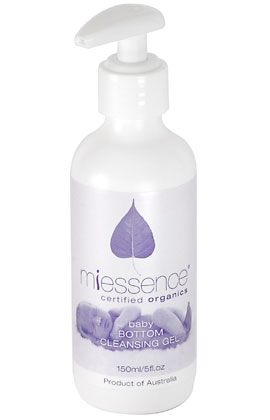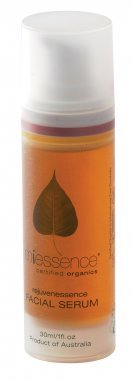|
|
SeptemberSpecial
Hi Folks,
In this issue:
I mentioned in last months newsletter that this month we would reveal the NEW baby products from Miessence. I have chosen to put quite a lot of information in this edition, I hope you can cope with it - it is important to understand the enormity of this issue. Some of the information is from a presentation by Dr Sandra Lantz at the recent ONEgroup conference.                                                      So lets get on with it, hope you find the following interesting. CHEMICAL FREE KIDS - so what's the issue? For many of us have the thought(and illusion) that when a child is born they are "pure and untouched" by all that is man-made. A new born baby is a special gift and obviously as caring parents we all would like to think we do the best for our precious wee things and protect them from all the "nasty" aspects of the world we live in. Up until quite recently, it was thought that the placenta was an effective barrier for the feotus and protected the unborn from toxins that may circulate in the mothers blood. Sorry, this is not the case. When a newborn baby takes his/her first breath he/she is already contaminated with a range of chemicals… What’s inside babies body’s? *Non-stick chemicals *Flame-retardants *Perfumes *Artificial musks used in cosmetics and cleaning products *Plastics *Non stick and water-proof coatings *Cleaning fluids *Tin can linings *Cosmetics *Chemicals from baby bottles *Banned, yet persistent, pesticides such as DDT [World Wildlife Fund (WWF) UK, A Present for Life: hazardous chemicals in cord blood; The Environmental Working Group’s report, Body Burden — The Pollution in Newborns; WHO, 2002] How do they get in there? *Umbilical cord *Placenta (a semi-permeable membrane, which passes many chemicals. Many soluble chemicals will cross the placenta very quickly. There no such thing as a ‘placental barrier’ that so many people assume) *Breast milk (in addition to its nutritional and immunological properties, research continues to reveal a full range of toxins and contaminants in breast milk, including the presence of suspected carcinogens especially fat-seeking, chlorinated organics (a large class of chemicals including vinyl chloride, PCBs, and chlorinated solvents, insecticides, pesticides and herbicides) Here is information from some of the studies, first is research from WWF........ Blood tests taken from the umbilical cords of 30 newborn babies and from more than 40 new mothers were analysed for the presence of eight groups of chemicals. Every single sample of mother or baby blood tested positive for an array of chemicals, many of which are suspected of links to health problems ranging from birth defects and genital abnormalities to certain types of cancer. All umbilical cords contained a minimum of five of the 35 chemicals tested for, some contained as many as 14. Two of the mothers tested had 17 of the 35 chemicals in their blood. [World Wildlife Fund (WWF) UK, A Present for Life: hazardous chemicals in cord blood] And then EWG research found an average of 200 industrial chemicals and pollutants in umbilical cord blood from 10 babies born in August and September of 2004 in U.S. hospitals. The umbilical cord blood of these children harboured pesticides, consumer product ingredients, and wastes from burning coal, gasoline, and garbage. Of the 287 chemical detected in the umbilical cord blood, 180 cause cancer in humans or animals, 217 are toxic to the brain and nervous system, and 208 cause birth defects or abnormal development in animal tests. [The Environmental Working Group’s report, Body Burden — The Pollution in Newborns] WHO studies show....... Chemical residues in human breast milk is determined by either the extent of the exposure to these chemicals and/or the properties of the chemicals. In the UK, a study of dioxins (PVC plastic for example) in breast milk, two month old babies receive around 40 times the World Health Organization (WHO) recommended amount, while 10-month old infants receive around 10 times in excess What makes children particularly vulnerable to chemicals?
BABY WIPES Ingredients: Water, Potassium Laureth Phosphate, Aloe Barbadensis, Glycerin, Polysorbate 20, Tetrasodium EDTA, DMDM Hydantoin, Methylparaben, Malic Acid, Tocopheryl Acetate
So other than the skin irritations that can result the more important aspect is the toxicity itself. Whilst our bodies are very clever and can eliminate some of chemicals we ingest, digest and absorb, many of them cannot be effectively eliminated or broken down. These chemicals can:
How do we measure if a chemical is toxic? The study of poisons in the body is known as toxicology. Toxicity testing of the body is rarely done and when it is, testing is performed on singular chemicals and does not take into account the potential for interactions. The problem is we are usually(always I would suggest) exposed to multiple chemicals simultaneously. A common argument is that in small doses these chemicals will do no harm to the body. The following from Dr Varipatis sums things up.......… ‘We are taught that if it takes 200 units of a poison to kill us,and 50 to make us sick, then 10 units are relatively harmless. And one unit each of 200 different chemical toxins are absolutely harmless! However, what we are seeing is that the small doses of many chemicals ultimately are much more poisonous than the large doses of a single chemical. Once someone’s system is overloaded and damaged, then the chemical doses required to cause severe illness become infinitesimal’. (Varipatis,1997) Once again, those of us who have choices with where we spend our hard earned cash can be far more influential on manufacturers simply by not buying products that use ingredients that cause harm - the next step is in your hands. The Miessence baby range consists of 6 products(plus one for Mum) all free of essential oils and have been specifically designed to sooth sensitive baby skin. Here is one example from the range:  BOTTOM CLEANSING GEL Certified organic Bottom cleansing gel to gently cleanse baby's stinky bottom (and grubby hand and messy faces too!) BOTTOM CLEANSING GEL Certified organic Bottom cleansing gel to gently cleanse baby's stinky bottom (and grubby hand and messy faces too!)Gentle enough for newborns. Free from allergens and semi-naturals. Hint of organic vanilla to help neutralise stinky odours. Use with washable soft cloth to cut down on landfill waste Significant savings over disposable wipes. Packaging: 100% Recyclable, Non-Leaching PP Ingredients: *organic aloe vera leaf juice, purified water, *organic sunflower seed oil, yucca extract, bitter orange fruit extract, sclerotium rolfsii gum, *organic marshmallow root extract, *organic chamomile flower extract, *organic calendula flower extract, *organic vanilla extract. *Certifed Organic Ingredient To check out all the new Baby products and their ingredients etc, click on this link to our ONEgroup website. And don't forget, if you are planning on having children, clean up your act now and have a healthier happier baby by using only the purest safest products on the planet. Miessence Personal care
Its time to CELEBRATE!!
Have you tried it yet? See the bottom of the newsletter for a special deal! How do I get rid of my negative thoughts?' Lets lighten up and get a little humour into things here. The following is something that I thought may be worth sharing. Particularly important for any health practitioners out there to grasp this technique! http://www.youtube.com/watch?v=BYLMTvxOaeE&eurl=http://www.scienceofgettingrich.net/update.html   
From the World News desk......... Babies Absorb Chemicals
And just when you thought you had all the up to date info, here is a little more.
Baby lotion, powder and shampoo can lead to higher concentrations in an infant’s body of phthalates, chemicals linked to allergies and altered reproductive development, a US study shows. Come on folks, its all up to us - we are the ones with the choices, so make them wisely, the ongoing use of sysnthetic chemicals affects us all! SPECIAL SEPTEMBER OFFER:  To celebrate the recent award for the very popular Rejuvenessence Facial serum we are offering a special deal for any of our NZ customers, in fact we will pay the GST and send it to you FREIGHT FREE for the entire month of September. To celebrate the recent award for the very popular Rejuvenessence Facial serum we are offering a special deal for any of our NZ customers, in fact we will pay the GST and send it to you FREIGHT FREE for the entire month of September.The cost for this months special is just $49.95 so that's a saving of more than $12.50! If you would like to take advantage of this months offer please reply here without delay. Once again thanks for being with us on our journey for a better understanding of wellness. As always, let us know if there is something special you are in need of to help keep you(or shift you onto) the path to vibrant health. Yours in good health,  Susanne & Gary PS: Don't forget to forward the newsletter onto anyone who may find this of interest, till next time enjoy the Spring. :) |



 Rejuvenessence Facial Serum was recently honoured at the Natural and Organic Awards 2008. It was a finalist in the “Best Organic Facial Skincare Product” category.
Rejuvenessence Facial Serum was recently honoured at the Natural and Organic Awards 2008. It was a finalist in the “Best Organic Facial Skincare Product” category.
 I can't believe how fast my body has responded to the treatment and programme I have been given to follow..
I can't believe how fast my body has responded to the treatment and programme I have been given to follow..


